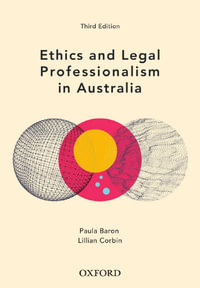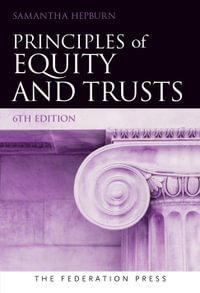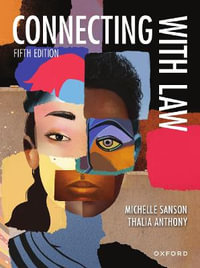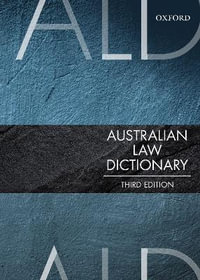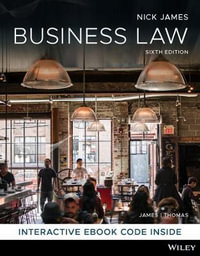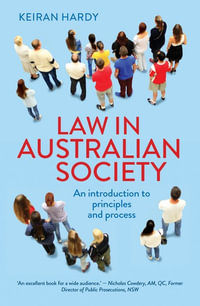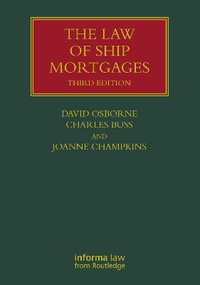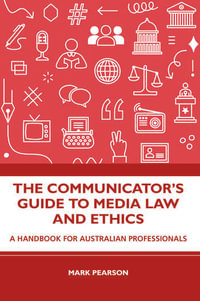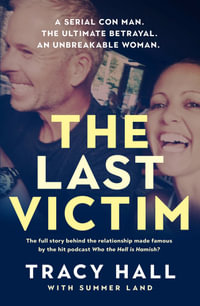This book is an essential introduction to the complex issues and debates in the field of law and film. It explores interconnections that are usually ignored between law and film through three main themes:
- A Fantastic Jurisprudence explores representations of law in law
- Law, Aesthetics and Visual Technologies focuses on the visual aspects of law's moving image
- Regulation: Histories, Cultures, Practices brings together work on different dimensions and contexts of regulation, censorship, state subsidies and intellectual property to explore the complex inter-relationship between the state, industry and private regulation.
Law's Moving Image is an innovative, multi-disciplinary contribution to the rapidly growing fields of study in law and film, law and visual culture, law and culture, criminology, social and cultural studies. It will be of interest to students and academics involved in these areas.
Industry Reviews
This is a collection of essays on the interaction between the law and motion pictures. It brings together specialists from the worlds of film studies, literary theory, cultural studies, sociology as well as the law, and offers a multidisciplinary exploration of such matters as the jurisprudence of British wartime cinema, the impact of film on perceptions and experiences of law and order, and the dynamics of regulatory mechanisms and structures vis--vis the film industry. An unusual, but interesting book. The Commonwealth Lawyer, Journal of Commonwealth Lawyers' Association, December 2004, Vol 3. No 3 This collection of essays has been generated by a cross-disciplinary team of Editors at Birbeck College, University of London. Although the common factor running throughout the essays is that they all possess some connection with the law and film making, the essays share no common theme. Rather, they are a prism through which strands of film making and legal interest are refracted in several different ways. Thus some of the essays focus on the portrayal of law, or at least of legal proceedings; others address the medium of film as a subject of legal protection; other again consider the impact of law upon their very content, and so on. A collection such as this presents several problems to the reviewer. First, this book demonstrates competence in a wider degree of disciplines than are normally mastered by a single individual. Secondly, those of its contributors who discuss the content of specific films challenge the reader on at least two levels: one arises from the manner in which they read the films (which may differ from the reviewer's own often distant recall of them), while the other arises from the manner in which, having read the contributors then integrate their reading into the greater scheme of things which forms their specific subject matter. All this gives the reviewer a task which is intellectually stimulating, though never easy. The book's 16 chapters are split between three general headings. "A Fantastic Jurisprudence" examines legal processes and norms on screen; "Aesthetics and visual Technologies" tackles portrayals of the trials of Oscar Wilde (copyright students will remember reading Warwick V Eisner) and Adolph Reichmann, among other topics. Finally "Regulation: Histories, Cultures, Legalities" predictably addresses issues of censorship, film production and the impact of new technologies on commercialisation. Some of the chapters stand out as being of particular interest. One is "Heavenly Justice" in which Ian Christies, Professor of Film and Media History at Birkbeck, writes compellingly of the portrayal of supernatural justice and discuses at length "A Matter of Life and Death, the classic by Michael l Powell and Emeric Pressburger. While Professor Christie seeks to persuade the reader of this films' dramatic celestial courtroom function that it is a device to defuse mutual suspicions shared by the British and American Allies in post-war Europe, this reviewer cannot relieve himself of his own perception that it was intended to take a fairly vicious swipe at American bigotry and insensitivity, demonstrating the great British virtue of fairness and the universal power of love. Another chapter that caught this reviewer's imagination was "Toy law, toy joy, toy Story 2" by Fred Botting and Scott Wilson (from the Universities of Keele and Lancaster respectively). This contribution demonstrates the extent to which "Toy Story 2" is packed with a remarkable collection of normative, social and psychological devices -definitely a film to be seen by children but understood only by intellectuals. Since the specifically legal chapters may be of more interest to reader of this review they should be mentioned too. Fiona Macmillan (Professor of Law, Birbeck) offers a good and thoughtful overview of the copyright issues affecting films today, stretching out beyond law into issues of policy. Also, the chapter by M. Madhave Prasad ("The natives are looking: cinema and censorship in colonial India") provides a delightful account of British fears that the cinema would furnish the means where by their Indian subjects could break free from the shackles of colonial occupation. All in all, a very enjoyable book. Entertainment Law Review, Vol 16, Issue 6, July 2005.

